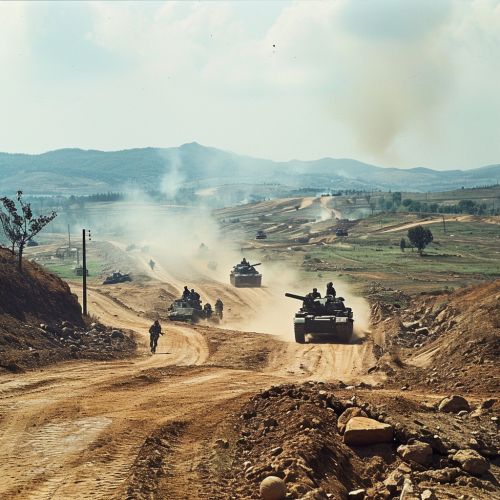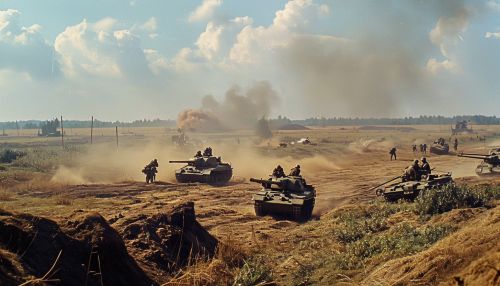1975 Spring Offensive
Background
The Spring Offensive of 1975, also known as the "Ho Chi Minh Campaign", was a series of military operations conducted by the People's Army of Vietnam (PAVN) against the Army of the Republic of Vietnam (ARVN) and the United States forces in South Vietnam. The offensive marked the end of the Vietnam War and the beginning of a period of reunification for the country.


Planning and Preparation
The planning for the Spring Offensive began in 1974, following the signing of the Paris Peace Accords. The PAVN, under the leadership of General Van Tien Dung, planned a two-year campaign to capture the South. The offensive was planned in three stages: the first stage aimed to destroy ARVN forces in the border areas, the second stage aimed to capture the cities in the Central Highlands, and the final stage aimed to capture Saigon.
The Offensive
The offensive began on January 7, 1975, with a PAVN attack on Phuoc Long. The city fell to the PAVN on January 6, marking the first stage of the offensive. The PAVN then turned their attention to the Central Highlands, launching attacks on Ban Me Thuot and Pleiku. The ARVN, under the command of President Nguyen Van Thieu, attempted to defend the cities but were ultimately forced to retreat.
The final stage of the offensive began on April 9 with the PAVN's attack on Xuan Loc. Despite fierce resistance from the ARVN, the city fell to the PAVN on April 21. With the fall of Xuan Loc, the path to Saigon was open.
Fall of Saigon
The PAVN began their assault on Saigon on April 27. Despite desperate attempts by the ARVN and U.S. forces to defend the city, Saigon fell to the PAVN on April 30. The fall of Saigon marked the end of the Vietnam War and the beginning of the reunification of Vietnam.
Aftermath
The Spring Offensive resulted in a complete victory for the PAVN and the fall of the Republic of Vietnam. The offensive marked the end of the Vietnam War and the beginning of a period of reunification for Vietnam. The war had a profound impact on both Vietnam and the United States, shaping the political and social landscape of both nations.
